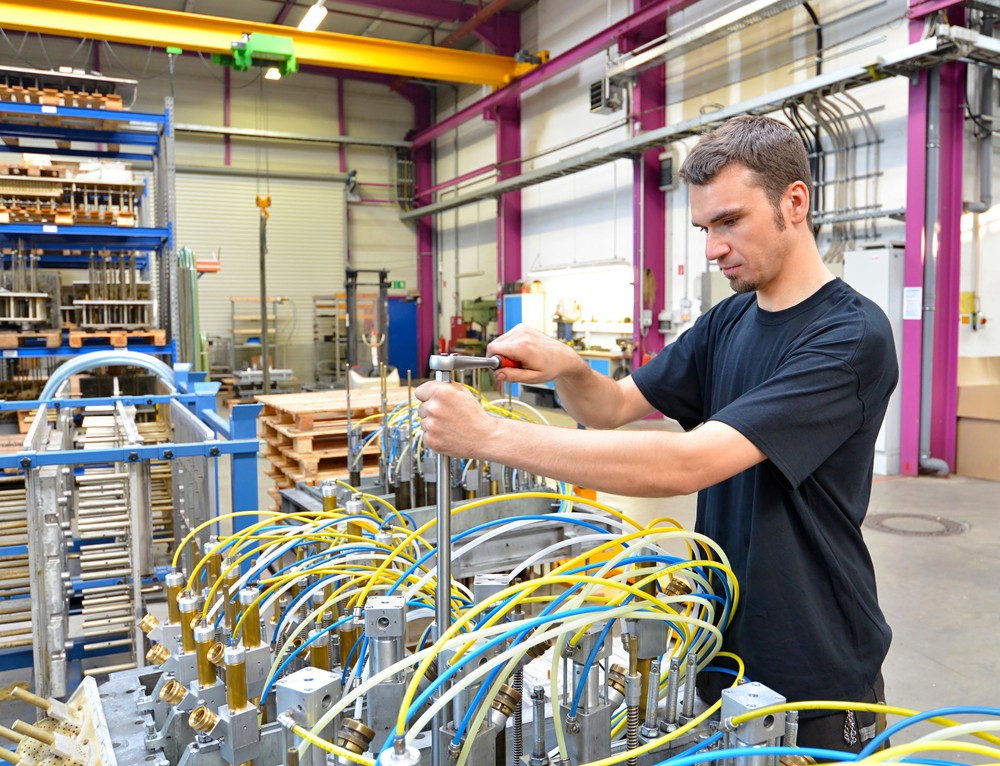5 Industrial Repair Metrics That Set the Standard for Efficiency

Types of Maintenance KPIs
Efficiency is an important metric for equipment maintenance programs, but it isn’t something manufacturers can encapsulate in a single figure. To tell the whole story, it’s necessary to look at several incremental measures of efficiency. How efficient is your equipment in operation? How efficiently does your company fix problems and deliver routine maintenance? Each measure of efficiency adds up to the broader definition.
Here’s a look at five important industrial repair metrics and how they factor into a comprehensive picture of efficiency.
1. Preventive Maintenance Compliance (PMC)
This metric measures the percentage of scheduled preventive work tasks completed over a certain time period. To find this percentage, divide the number of completed work orders by the number of scheduled work orders, then multiply by 100 to get a percentage. For example, imagine you have 50 scheduled work orders but only complete 35. The formula for this is:
PMC = (35/50) x 100 = 70%
Preventative maintenance compliance is a useful metric in tracking effectiveness and efficiency of preventive maintenance programs. This metric also helps ensure efficient use of resources.

2. Planned Maintenance Percentage (PMP)
PMP tells manufacturers how much time was spent on unplanned maintenance tasks versus planned ones. To find the PMP, divide scheduled maintenance time by total maintenance time, then multiply by 100 as seen below:
PMP = (planned maintenance hours/total maintenance hours) x 100
Knowing this percentage helps reduce downtime and determine how to use time more efficiently. It also helps with budgeting future maintenance tasks and creating a more productive maintenance schedule.
3. Mean Time Between Failure (MTBF)
This metric measures the predicted time between the failure of a mechanical system and when it starts working again. Essentially, the higher the machine’s MTBF, the longer you can rely on it between service or downtime. When calculating the MTBF, divide a machine’s operation time by its total number of failures.
MTBF = (SUM of operational time/total number of failures)
Every company should use this metric as part of their management plan for equipment upkeep as it determines how long a machine or part will last. Developing a good preventive maintenance plan is much easier when MTBF is a known quantity.

4. Mean Time to Repair (MTTR)
MTTR measures how long a part will take to repair. This measurement includes repair time and time spent testing equipment before putting it back into production mode. To find the MTTR, figure out the total time spent on repairs and divide by the total number of repairs in a given period.
MTTR = (SUM of downtime periods/total number of repairs)
This metric is essential in maintaining an efficient repair schedule. Time spent repairing a broken part means profit loss for a company. For this reason, it’s important to keep the MTTR as low as possible.
5. Overall Equipment Effectiveness (OEE)
OEE measures equipment productivity by considering the machine’s quality, performance, and availability. The higher a company’s OEE, the better. A company with an OEE of 100% means it is producing items with no defects. Calculating OEE involves multiplying measurements on a part’s availability, performance, and quality.
OEE = availability x performance x quality
Knowing the OEE helps companies determine whether changes to their production process are necessary. This measurement also identifies problem areas in the production flow.

These five metrics aren’t the only ones used in manufacturing, but they are among the most effective for determining equipment service and maintenance efficiency. Using these metrics allows companies to determine which areas of their preventive maintenance program require improvement.